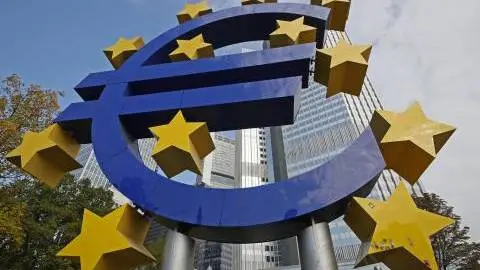Higher Bund yields: Strong technicals to subdue corporate spreads from widening
Higher Bund yields are to be expected this year, and the rise may well be front-loaded. As yields rise and tapering talk comes to the forefront, spreads are likely to widen from current levels. But this widening will be subdued as we feel the technical picture will remain strong for credit
Strong technicals from less supply, inflows and ECB asset purchases
The strong technical environment in place for 2021 is driven by a large drop in net supply. There is a notable increase in redemptions this year totalling €214bn. And we forecast supply will fall to €350bn - still a sizeable amount but significantly lower than €440bn last year and €390bn in 2019.
Read more on ESG fund flows here.
| €350bn |
Euro corporate supplyForecast for 2021 |
Furthermore, the technical picture includes mutual fund inflows for 2021. We expect inflows into the Euro investment grade space will be marginal but positive nonetheless. Interestingly, ESG funds have seen the vast majority of inflows over the past year. Over the last two years, a whopping 85% of assets under management (AuM) have flowed into these funds. Non-ESG funds have seen only marginal inflows, amounting to just 3% of AuM over the past two years. And since August of 2020, non-ESG funds have seen mostly outflows.
The ECB will continue its reinvestment even after it stops actively purchasing, muting any potential taper tantrum
The European Central Bank, meanwhile, is playing a significant role in supporting credit markets, with both the Corporate Sector Purchase Programme and corporate purchases under the Pandemic Emergency Purchase Programme. With reduced supply, the ECB is forced to concentrate purchases in the secondary market. This is further supportive for spreads.
Even if purchases under PEPP begin to slow and eventually cease, the CSPP will likely remain in full flow, pencilling in at least €65bn of net purchases for the year (gross purchases of €80bn). Additionally, the ECB will continue its reinvestment even after it stops actively purchasing, which will mute any potential taper tantrum.
As a result of lower supply and increased demand, we forecast net supply to fall from around €150bn to just €50bn, as you can see in the chart below.
Corporate net supply is lower in 2021

Strong technicals will keep widening subdued
This strong technical picture will remain supportive for spreads and keep any widening subdued, however, widening from current levels is still expected as rates rise and PEPP tapering talks come to the forefront.
The long end will underperform causing credit curves to steepen
This is in line with our view for a more bearish outlook for the second half of this year, and in particular, our view for the long end to underperform, causing (as expected) credit curves to steepen.
We do take a more conservative stance for the second half of the year, whereby we prefer more defensive sectors such as Utilities and Telecoms and we prefer ESG debt.
No substantial detrimental effects expected
As rates rise, we do not expect any substantial detrimental effect to funding levels as a whole or to credit metrics. The rise in Bunds of 30bp, even when matched with, for example, a 20bp widening in credit spreads is nothing too extraordinary for the short end.
The expectation of the 10-year swap rate to reach 0.55 by the end of the year, up from -0.25% in January, and the rising Bund and likely widening of credit spreads at the longer end, in particular (albeit nothing substantial), will affect the funding levels for higher beta debt at the long end. The cost of funding could rise by around 1%, in which case, it is likely we may see significant pre-funding for longer issues. This will put further pressure on the long end, pushing curves steeper.
However, this will likely leave the technical picture unaffected as, after particularly low supply in May; year-to-date supply thus far is sitting at just €144bn, which is slightly short of our expectations.
As the search for yield becomes easier in the longer term, the attraction for the high yield market will decrease, as investors will not need to take higher credit risk for relatively little yield.
We do not expect any major widening of credit spreads on the back of rising Bund yields
Therefore, we may eventually see outflows in the high yield space at that point. But this, too, should not be of any major concern as it is more a technical issue as opposed to any worsening of the underlying metrics. In any case, this will be seen more in the US in the long term.
All in all, we do not expect any major widening of credit spreads on the back of rising Bund yields, as technicals will keep any widening subdued. However, some widening is still expected, particularly at the long end of the curve, as PEPP tapering talks come to the forefront. As bund yields, 10yr swap rates and spreads all rise (at the longer end) this will increase funding costs for issuers. As a result, we may see prefunding in the form of longer-dated bonds. In any case, we remain conservative for the second half of the year.
This publication has been prepared by ING solely for information purposes irrespective of a particular user's means, financial situation or investment objectives. The information does not constitute investment recommendation, and nor is it investment, legal or tax advice or an offer or solicitation to purchase or sell any financial instrument. Read more
Download
Download article
20 May 2021
Higher Bund yields: The complete picture This bundle contains 4 Articles
